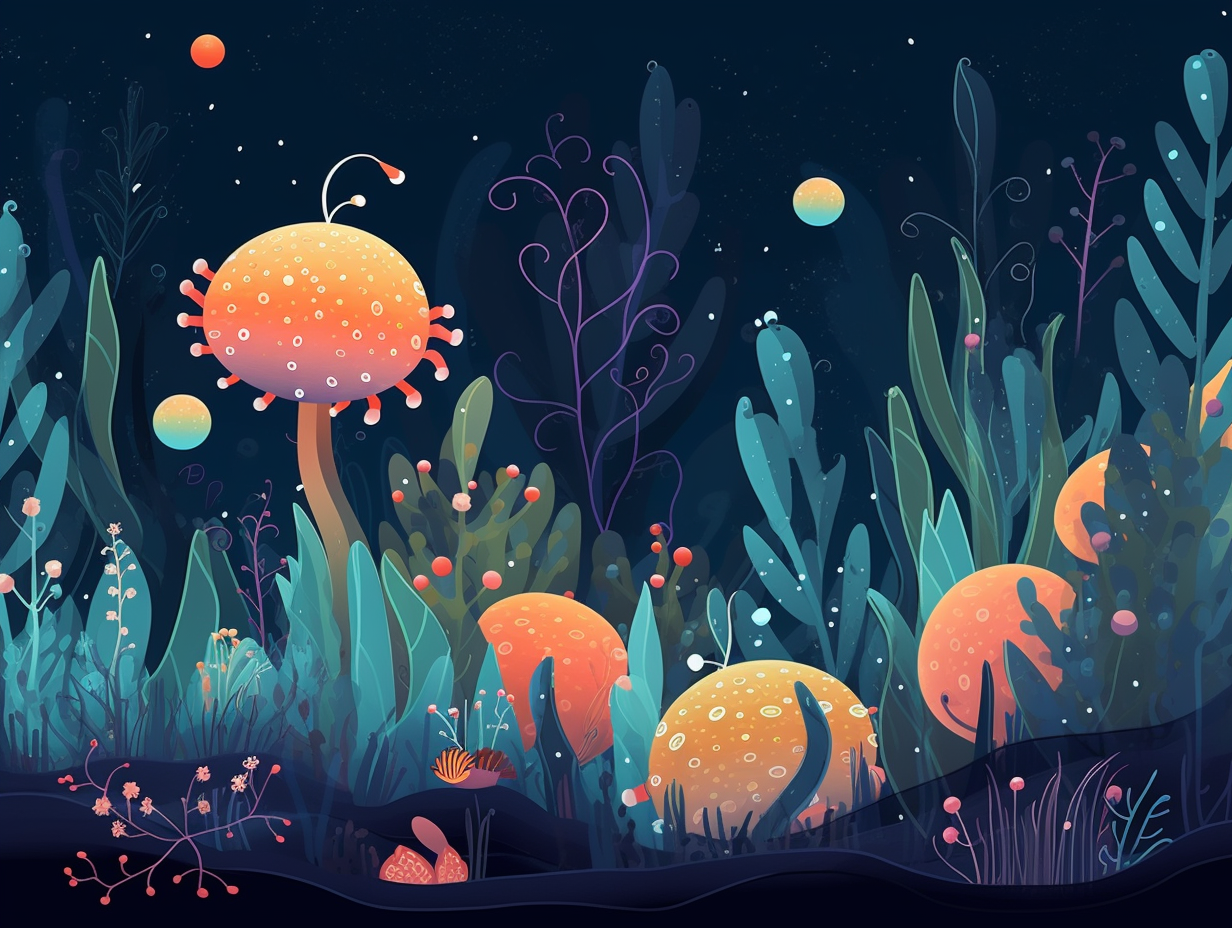Discover the Microscopic World: 11 Exciting Fun Facts About Paramecium You Never Knew!

1. Cilia Salsa Dancing
Step aside, salsa dancers, there's a new groove master in town: the Paramecium with its 4,000 motile cilia moving in perfect harmony, all controlled by bioelectric signals! They not only make it the life of microscopic parties, but also hold potential insights into understanding ciliopathies and gene mutations.
Source => ncbi.nlm.nih.gov
2. Hair-like Oars and Evasion Skills
It seems the humble paramecium has taken the phrase "just keep swimming" to heart, propelling through their freshwater homes with fabulous hair-like cilia that double as teeny-tiny oars: In fact, these microscopic, single-celled creatures are known for both their unique movement and evasion skills, which they demonstrate through their "avoiding reaction" when stimulated – all thanks to a fancy action potential produced by voltage-gated calcium channels in their cilia. And you thought your hair had a mind of its own!
Source => ncbi.nlm.nih.gov

Did you know protozoa are like the Michael Phelps of the microscopic world? Discover how these tiny organisms swim and shuffle using their unique features!
=> Fun Facts about Protozoa
3. Romeo and Juliet, the Paramecium Edition
If Shakespeare's Romeo and Juliet were paramecia, they might have skipped the whole messy tragedy by just fertilizing themselves! Ahh, the sweet solace of self-love in the microscopic world: Paramecium, a type of single-celled ciliate, can reproduce sexually and asexually, and their self-fertilizing ability has been linked to increased stress resistance, opening up new avenues of research on the benefits of sex beyond genetic diversity.
Source => ncbi.nlm.nih.gov
4. Cilia-mpics Gold Medalists
If paramecia started a swimming team, they'd win gold at the "Cilia-mpics" every time by spiraling through the water like aquatic tornadoes: Paramecium use tiny hair-like structures called cilia to propel themselves and even house green algae roommates in exchange for nutrients, all while maintaining a healthy balance of water in their tiny bodies using special contractile vacuoles.
Source => en.wikipedia.org

5. Paramecium's Personal GPS
Who needs a personal GPS when you've got cilia? Paramecium sure don't: These microscopic creatures, despite their simplicity, astoundingly navigate their watery world, avoiding potholes by reversing their cilia strokes, and even flex their tiny brain muscles by discerning between varying brightness levels when subjected to electrical currents.
Source => en.wikipedia.org
6. Microscopic Straw Slurpers
Can you imagine the paramecium taking its food through a microscopic straw, slurping away in the tiniest of cafes in the single-celled organism world? Quite the dainty little diners they are: Paramecium has a unique structure called the cytostome, which functions like a straw that sucks food into vacuoles for further processing, located near their nucleus and often close to the flagellar pocket. It's like a minute, organic smoothie bar, but for protozoa!
Source => en.wikipedia.org
7. Built-in Plumbing Trendsetters
Don't be fooled by Paramecium's frilly appearance – these little water-dwelling trendsetters are actually sporting the freshest interior design: built-in plumbing! That's right, these single-celled superstars boast a contractile vacuole: a specialized structure that functions like a water pump to prevent cellular explosion from over-hydration. Eat your heart out, HGTV!
Source => en.wikipedia.org
8. Tiny H2O Sommeliers
When paramecia get thorsty, they turn into little H2O sommeliers: these tiny connoisseurs of water quality can serve as indicators for our aqua potability, allowing scientists to decipher the drinkability just by observing their movements, no fancy equipment or potions required!
Source => livescience.com
9. Detective Paramecium's Secret Weapon
Next time Detective Paramecium needs to foil a villainous plot, it's got its own secret weapon in its arsenal of microscopic justice: trichocysts! These crafty organelles are master chemists, bursting into action by explosively recrystallizing in the presence of calcium and tossing out inhibitory lectins to thwart predators during a heated exocytosis showdown. Take that, microscopic evildoers!
Source => pubmed.ncbi.nlm.nih.gov

10. The Complex Dating Game
Paramecium's dating game sure is complex: expect an exchange of genetic material, some fancy "protoplasmic bridges," and even a diploid zygote nucleus as a parting gift! Funnily enough: this process, known as conjugation, is essential for rejuvenating paramecium, generating genetic diversity, and creating metabolically active macronuclei.
Source => studyandscore.com
11. Goldilocks Paramecium pH Masters
Step aside Goldilocks, Paramecium caudatum are the true masters of finding that pH "just right"! This wiggly microscopic powerhouse thrives in a realm between too acidic and too alkaline: they can happily survive in conditions ranging from pH 4.7 to 9.7 but don't expect them to attend pool parties with pH 4, 10.7, and 11.7. Bonus: these tiny critters are even better survivalists under low oxygen conditions.
Source => scialert.net
Related Fun Facts




















